fishing pole size guide

Choosing the right fishing pole size is crucial for a successful fishing experience. This guide explores key factors‚ from rod length to reel compatibility‚ ensuring optimal performance for any angler.
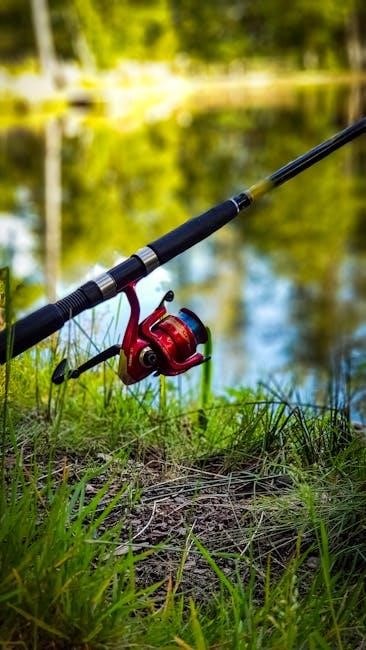
Factors Influencing Fishing Pole Size
The size of a fishing pole is influenced by target species‚ fishing technique‚ personal preference‚ and fishing environment‚ ensuring optimal performance and comfort for anglers.
Target Species and Fishing Technique
The size of your fishing pole largely depends on the target species and the fishing technique you plan to use. For smaller species like trout or panfish‚ lighter rods with shorter lengths (5-7 feet) are ideal‚ allowing precise casting and control. Larger species‚ such as bass or marlin‚ require longer‚ heavier rods (7-12 feet) to handle powerful fights and larger lures; Techniques like baitcasting‚ spinning‚ or fly fishing also dictate rod size and action. For example‚ spinning rods are versatile for both light and medium-heavy applications‚ while baitcasters are preferred for accuracy and strength in heavy-duty fishing. Matching your gear to the fish and method ensures a more effective and enjoyable experience. Always consider reel size compatibility to maintain balance.
Personal Preference and Fishing Environment
Your personal preference and the fishing environment significantly influence the ideal pole size. Anglers with limited strength or height may prefer shorter‚ lighter rods for ease of handling. Conversely‚ taller individuals or those fishing in open waters might opt for longer rods for better reach and leverage. Fishing in tight spaces‚ like small streams‚ calls for shorter rods (5-6 feet)‚ while open areas‚ such as lakes or surf‚ benefit from longer rods (8-12 feet) for casting distance. Consider the material—graphite for sensitivity or fiberglass for durability—based on your preference. Environmental factors like wind‚ water depth‚ and vegetation also play a role in selecting the right pole size for optimal performance and comfort. Balancing these elements ensures a tailored fishing experience.

Understanding Rod Length and Its Impact
Rod length significantly affects casting distance‚ accuracy‚ and leverage. Longer rods enhance distance and leverage‚ while shorter rods improve control and precision in tight spaces.
How Rod Length Affects Casting Distance and Accuracy
Rod length plays a critical role in determining casting distance and accuracy. Longer rods‚ typically ranging from 7 to 10 feet‚ provide greater leverage and allow for longer casts‚ making them ideal for open-water fishing. Shorter rods‚ usually between 5 to 6 feet‚ offer better control and precision‚ which is beneficial in tight spaces or when targeting smaller species. The length also influences the angler’s ability to manage line and lure placement. For example‚ a longer rod can cast lighter lures farther‚ while a shorter rod excels in accuracy for delicate presentations. Balancing rod length with fishing technique ensures optimal performance and efficiency during casting.

Rod Action and Power Explained
Rod action refers to a rod’s flexibility‚ while power indicates its strength to handle specific line weights. Together‚ they determine the rod’s performance in various fishing scenarios.
Differences Between Rod Action and Power
Rod action describes how much a rod flexes when under pressure‚ ranging from ultralight to heavy. It influences sensitivity and casting accuracy. Power‚ on the other hand‚ refers to the rod’s strength and lifting ability‚ determining the maximum line and lure weight it can handle. While action affects the feel and responsiveness of the rod‚ power is about raw capability. Understanding both is essential for matching the rod to specific fishing techniques and target species. A rod’s action and power must align with the angler’s needs for optimal performance.
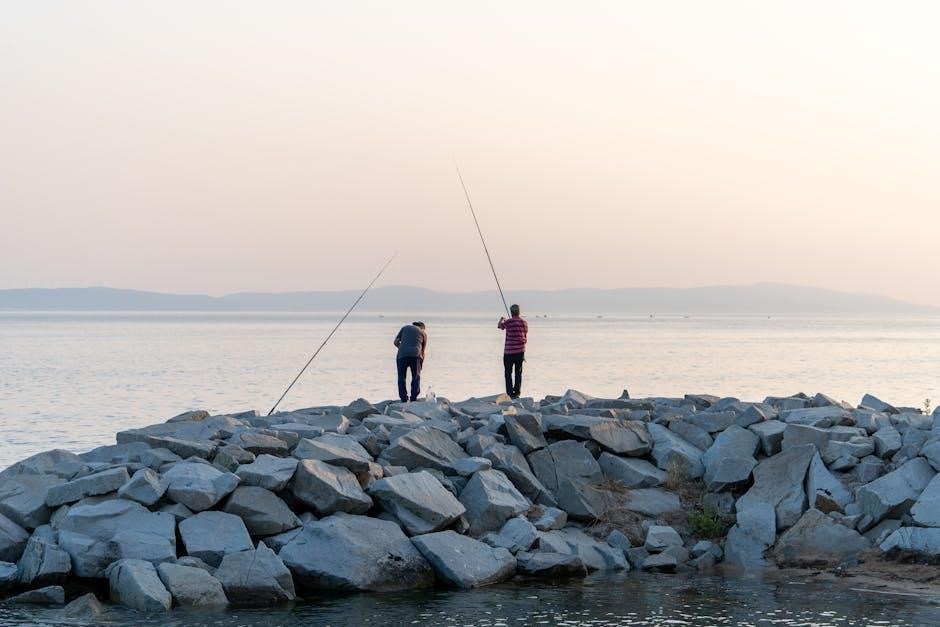
Reel Size and Its Relation to Rod Size
Reel size should complement the rod’s strength and fishing type. A larger rod requires a bigger reel‚ ensuring balanced performance and optimal line management.
Matching Reel Size to Your Fishing Rod
Matching reel size to your fishing rod ensures a balanced setup‚ enhancing performance and comfort. Consider the rod’s length‚ action‚ and power when selecting a reel. For example‚ a medium-light spinning rod pairs well with a reel rated for 8-12 lb test line. Baitcasting reels are ideal for heavy lines and larger species‚ while spinning reels excel with lighter tackle. Ensure the reel’s gear ratio aligns with your fishing style—faster gears for quick retrieves and slower ones for controlled presentations. Check the rod’s specs for recommended line weights to guide your reel choice. A well-matched reel enhances casting accuracy and overall fishing efficiency‚ making it essential for a enjoyable experience.

Line Guides: Size and Placement
Line guides play a crucial role in managing your fishing line. Properly sized and spaced guides improve casting distance‚ reduce line wear‚ and enhance sensitivity‚ ensuring smooth performance.
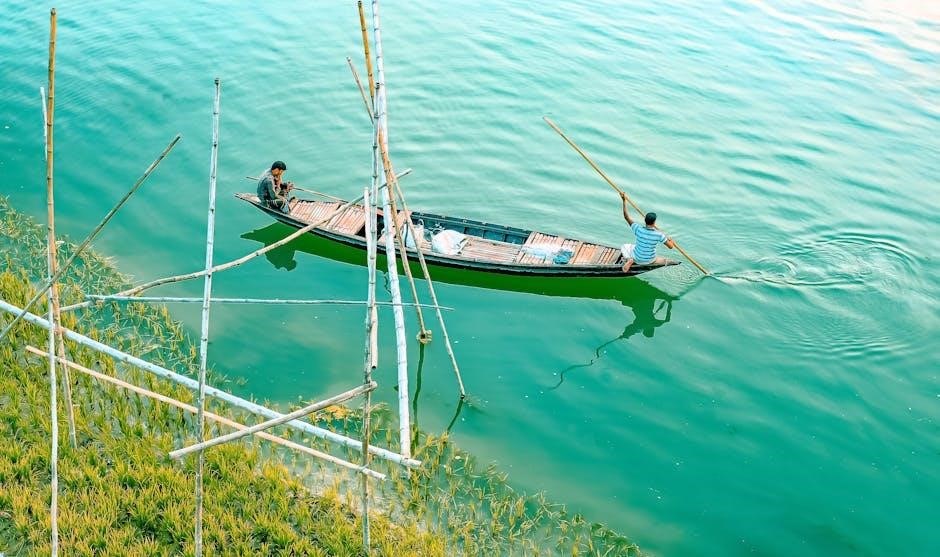
Importance of Line Guides for Line Management
Line guides are essential for effective fishing‚ as they minimize friction and prevent line tangling. Properly designed guides ensure smooth line flow‚ reducing wear and tear. They also enhance sensitivity‚ allowing anglers to detect even subtle bites. The size and placement of guides directly impact casting accuracy and distance. Larger guides are ideal for heavier lines‚ while smaller ones suit lighter tackle. Strategic placement prevents line overlap and ensures consistent performance. Well-designed line guides elevate the overall fishing experience‚ making them a critical component of a fishing rod’s functionality.
Handle Length and Material
Handle length and material significantly impact comfort and control. Longer handles offer better leverage‚ while shorter ones provide precision. Materials like cork or EVA ensure durability and grip.
Comfort and Durability in Handle Design
Comfort and durability in handle design are essential for long fishing sessions. Handles made from materials like cork or EVA provide a secure grip and resist wear.
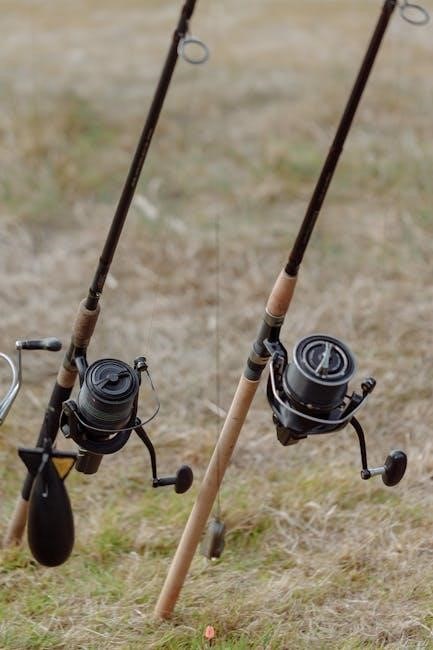
Cork handles are prized for their cushioning and natural grip‚ even when wet‚ while EVA handles are more durable and resistant to extreme conditions.
Ergonomic designs‚ such as contoured handles‚ reduce fatigue and improve control‚ ensuring a comfortable fishing experience. The right handle material balances comfort and longevity.
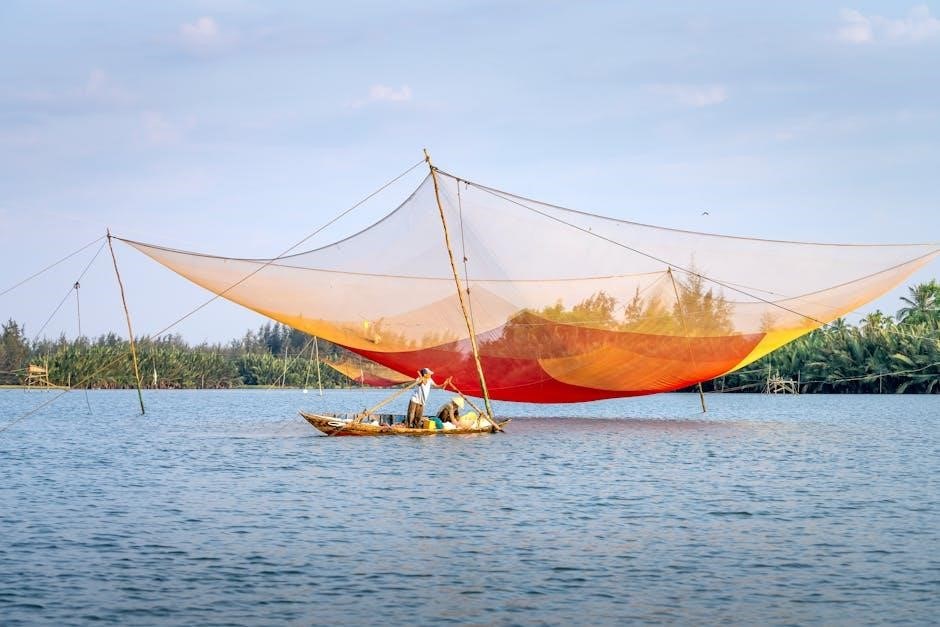
Species-Specific Considerations
Choosing the right rod size depends on the target species’ size and fighting ability. Lighter rods suit smaller fish like trout‚ while heavier rods tackle larger species like tuna.
Choosing the Right Rod Size for Different Fish
When selecting a fishing rod‚ the size and type of fish you’re targeting play a crucial role. Lighter rods with shorter lengths are ideal for small species like trout or panfish‚ allowing precise control and sensitivity. Medium-sized rods are versatile for species like bass or walleye‚ balancing strength and maneuverability. For larger fish‚ such as salmon or tuna‚ longer‚ heavier rods are essential to handle the weight and fighting power. Surf fishing often requires rods over 9 feet to cast long distances. Matching the rod size to the fish ensures better performance and a more enjoyable experience. Always consider the fish’s size and strength when selecting your gear.